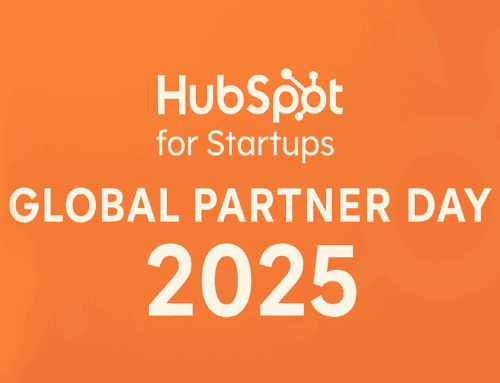AI Tools 101: Restructuring Data with Google Sheets and ChatGPT
Introduction to AI in Data Management
Artificial Intelligence (AI) has revolutionized the way we handle data. Combining tools like Google Sheets with powerful AI models such as ChatGPT provides a seamless experience in data management. Gone are the days when data restructuring was a cumbersome task involving endless hours of manual labor.
These AI tools are not just for tech enthusiasts or industry giants anymore; they’re accessible to everyone looking to optimize their workflow. But how exactly can you harness these capabilities? Let’s dive into the nitty-gritty of using Google Sheets and ChatGPT for efficient data restructuring.
Understanding Google Sheets for Data Handling
Google Sheets is a versatile tool that offers much more than traditional spreadsheet software. It allows for real-time collaboration and integrates smoothly with various data sources. This flexibility is crucial when dealing with large datasets that require frequent updates.
Not only does Google Sheets support complex formulas and data visualizations, but it also has APIs that facilitate interactions with other applications. By leveraging these features, users can automate repetitive tasks, thereby saving time and reducing the likelihood of errors.
The Role of ChatGPT in Data Restructuring
ChatGPT, a language model developed by OpenAI, plays a significant role in data restructuring by interpreting and processing vast amounts of information efficiently. Its ability to understand context and generate human-like text makes it a valuable asset in refining data sets.
With ChatGPT, users can automate data cleaning, recognize patterns, and even predict trends. This capability transforms what would typically be a tedious process into a streamlined workflow, allowing users to focus on analysis rather than data entry.
Integrating Google Sheets with ChatGPT
The integration of Google Sheets with ChatGPT opens up new possibilities for data management. By connecting these two tools, you can create automated systems that not only organize data but also offer insights and suggestions based on AI analysis.
This setup involves configuring APIs and setting up workflows that allow ChatGPT to access Google Sheets data. Once connected, this system can perform tasks such as reorganizing columns, renaming headers, and generating summaries—all without human intervention.
Practical Applications and Use Cases
Imagine a scenario where you’re handling financial records for a company. By leveraging Google Sheets and ChatGPT, you can automate the categorization of expenses, flag anomalies, and even generate monthly financial reports. This automation not only enhances accuracy but also frees up valuable time that can be spent on strategic planning.
Another practical use case is in the marketing sector, where collecting and analyzing customer feedback is crucial. Through AI tools, you can transform raw survey data into actionable insights, helping refine marketing strategies and improve customer satisfaction.
Getting Started: Step-by-Step Guide
If you’re new to using these tools, getting started may seem daunting. However, setting up a Google Sheets and ChatGPT integration is straightforward with the right guidance. Begin by familiarizing yourself with the APIs provided by both platforms. This step is critical as it forms the bridge between your spreadsheet and AI functionalities.
Once APIs are understood, set up an automation system using a platform like Make.com. This platform simplifies the integration process by offering pre-made templates and workflows that you can customize to suit your specific needs.
Maximizing Efficiency with AI Automation
Efficiency is the name of the game when it comes to data management, and AI-powered automation is the key to achieving it. By automating routine tasks, you can significantly cut down processing times and minimize errors, thereby making your operations more reliable and scalable.
However, maximizing efficiency isn’t just about automation—it’s also about continuously optimizing these processes. Regularly reviewing and updating your workflows to incorporate new AI advancements ensures that you’re always ahead of the curve in data management techniques.
Conclusion
In summary, integrating Google Sheets with ChatGPT offers a powerful solution for those looking to revamp their data management practices. These tools bring together the best of both worlds: the structure and accessibility of spreadsheets and the intelligence and adaptability of AI.
By embracing these technologies, you can transform how your data is handled, analyzed, and utilized, setting the stage for innovation and growth in your projects or business endeavors.
FAQs
How do I integrate Google Sheets with ChatGPT?
To integrate Google Sheets with ChatGPT, you need to establish API connections between the two platforms. Utilizing automation tools like Make.com can simplify this process, offering templates that guide you through each step.
What are the benefits of using AI in data restructuring?
AI in data restructuring automates mundane tasks, reduces errors, and provides deeper insights from datasets. It enables quicker decision-making and allows users to focus on strategic activities rather than data maintenance.
Can ChatGPT understand different languages in data?
Yes, ChatGPT is capable of understanding and processing multiple languages. However, its proficiency may vary depending on the language’s complexity and the model’s training data exposure to that language.
Is it safe to integrate my data with AI tools?
While integrating your data with AI tools like ChatGPT and Google Sheets is generally safe, it’s important to follow best practices for data security. Ensure that access permissions are correctly set and regularly review your security measures.
Do I need programming skills to use these AI tools?
No, programming skills are not mandatory. Many platforms, including Make.com, offer user-friendly interfaces and templates that enable you to set up AI integrations without needing to write complex code.









